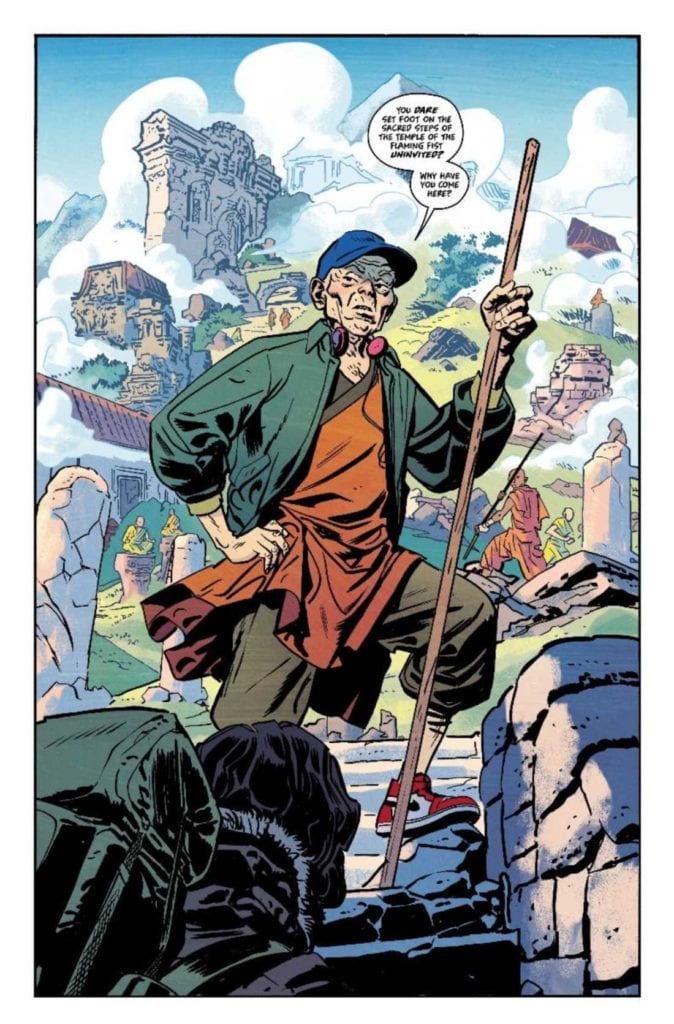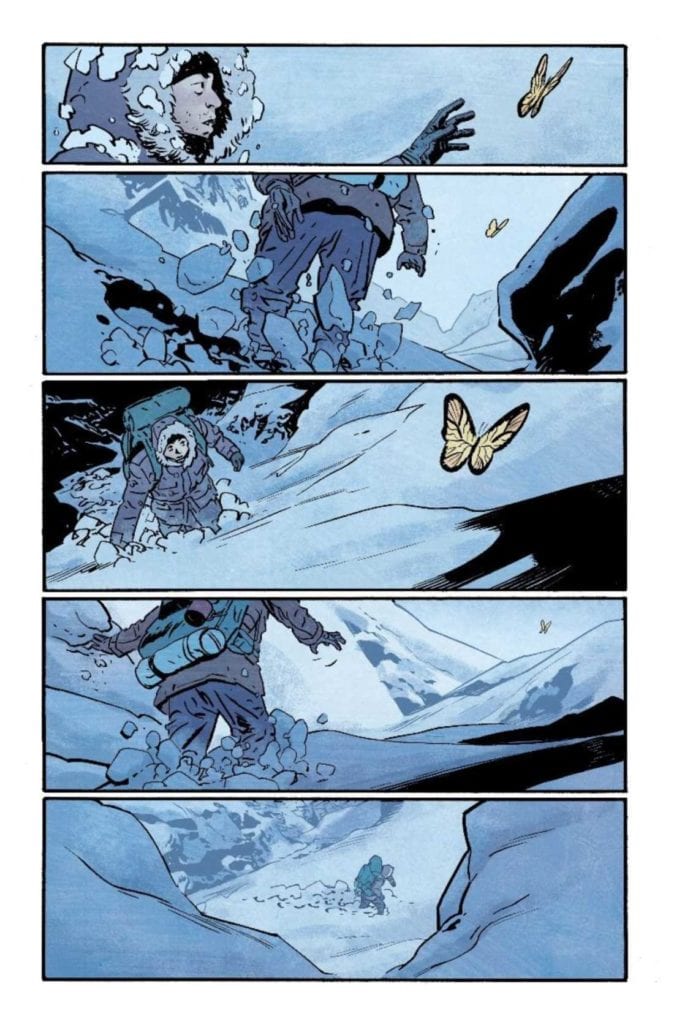Fire Power by Kirkman & Samnee has an unfortunate pre-release reputation as an Iron Fist rip-off, but Robert Kirkman makes a strong point that first impressions aren’t everything. Hopefully, coming out on April 29, Kirkman and co-creator Chris Samnee deliver a great story about spiritual balance.
Fire Power The Spirit of Martial Arts
If anyone has watched a certain video about Fake Martial Arts, they get an introduction to why martial arts, in general, has its appeal. It’s a sense of national identity and a chance for people to challenge the status quo, something Kirkman ingrains into every part of this Prelude. Now while Fire Power‘s primary martial art, the Flaming Fist, is indeed fictional, it never strays into the realm of cultish absurdity like Count Dante’s Dim Mak. There is a basis to the secret technique of throwing fireballs like in Street Fighter. But it’s so difficult that nobody is able to replicate it. All of which revolve around two of the main characters.
The Fuel and Oxygen

 Owen Johnson, unlike most martial arts protagonists, isn’t trying to become the strongest there is. Neither is he out for revenge. He just wants to learn about his birth parents. That journey leads him all across China, where martial arts masters instill in him a sense of discipline and patience. One that leads him to the Temple of the Flaming Fist. As well as the other major character, sifu Master Wei Lun.
Owen Johnson, unlike most martial arts protagonists, isn’t trying to become the strongest there is. Neither is he out for revenge. He just wants to learn about his birth parents. That journey leads him all across China, where martial arts masters instill in him a sense of discipline and patience. One that leads him to the Temple of the Flaming Fist. As well as the other major character, sifu Master Wei Lun.
Wei Lun’s character design from Samnee perfectly encapsulates his character. He’s a traditional man who combines the secret world of the temple with the modern world. Complete with wearing sneakers instead of sandals as well as headphones in addition to the traditional gi. This displays his greater patience to not cut himself off from the modern world.
Most people of the temple see it as their only place in the world and never try to do more than necessary. It’s why many temple practitioners give up on the fireball technique. Wei Lun meanwhile always tries to complete the fireball technique as a way of understanding himself and the people around him. This includes Owen when some revelations come to light. Both of these characters show an importance in martial arts, finding the balance in life. For only when you discard notions that hold you back do you fully realize yourself.
The Artwork Has Fire Power
In addition to the above character design of Wei Lun, Samnee’s artwork shows a balance of both character design and landscape detail. The mountainous region looks almost photorealistic. Meanwhile, the details on people’s faces receive a great degree of detail, including their wrinkles. All while evoking the traditional artwork from Chinese calligraphic paintings. The inking for the darker shading always goes into a rhythm that evokes not only moods but also a need for balance between the bright and dark. The dark holds secrets that people are trying to bring to light. Because once Owen embraces the darker sides of the temple, he doesn’t find what he wants, he finds what he needs at the climax.
Coloring
 Matt Wilson’s coloring also follows this philosophy of Fire Power. The dark blues of the mountain, in contrast to the warm colors of fire, act almost like an indication between answers and uncertainties. But perhaps that is best on display from the butterflies of the temple. Yellow butterflies are a sign of love, one that shows Owen’s drive to find the love of his parents. But it also means long life, something that both Owen and the temple hope to regain. One that culminates in a large bright yellow flame near the end of the climax.
Matt Wilson’s coloring also follows this philosophy of Fire Power. The dark blues of the mountain, in contrast to the warm colors of fire, act almost like an indication between answers and uncertainties. But perhaps that is best on display from the butterflies of the temple. Yellow butterflies are a sign of love, one that shows Owen’s drive to find the love of his parents. But it also means long life, something that both Owen and the temple hope to regain. One that culminates in a large bright yellow flame near the end of the climax.
Lettering
Rus Wooton’s lettering matches significantly with the above art styles. Some of the simple calligraphy when it comes to the onomatopoeias can become complete extensions of actions. The thicker the lines, the stronger the action. When some of those actions receive coloring, it’s usually for something either threatening or revealing. Bright yellows, in particular, drive the reader into revealing the state the characters are in. The word balloons match up when the words turn from black to dark red. By the time of the big action scene large onomatopoeias indicate the climax.
Fire Power is What Netflix’s Iron Fist Should’ve Been
While it’s okay to make comparisons to Iron Fist for advertising’s sake, Fire Power is the way to show a proper origin story. Because first impressions aren’t everything, there are some things you have to try and understand. Some people might show their entire character like Wei Lun, but that’s only because paying too closely to traditions can hold you back. It’s finding that secret and knowing what to do with it that means the most. So don’t assume that just because you’ve seen one Martial Arts series that you’ve seen them all.
Do you think Fire Power is still just an Iron Fist rip-off? Leave your thoughts in the comments.

